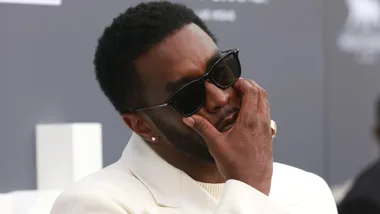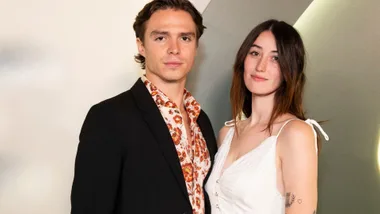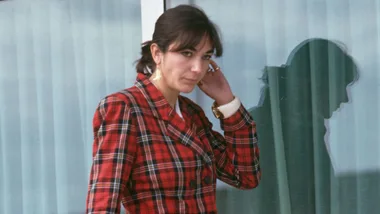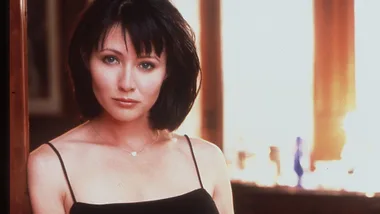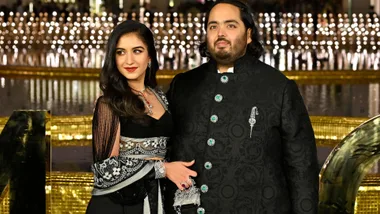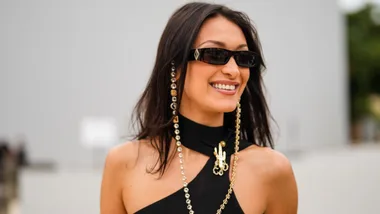Most famous for her role as Princess Leia in Star Wars, Carrie Fisher was nearly consumed by Hollywood – and her addictions – before finding happiness.

Carrie Fisher runs through the set of the Death Star, her white Princess Leia costume flapping as she grips Luke Skywalker’s – aka Mark Hamill’s– hand, a clutch of actors dressed as Stormtroopers in hot pursuit. On a cavernous sound stage in Hertfordshire in the UK, the pair is shooting a heart stopping action sequence that calls for Leia and Luke to swing, holding on to a rope, across a vast drop.
The young actress, dark hair tightly woven into buns over her ears, and Mark gamely grab the rope – and each other – and fly over the void. This sequence would become one of the most iconic scenes in one of the most iconic movies of all time.But for 19-year-old Carrie, who had dropped out of drama school to take on her first major film role, the stunt was a moment of pure terror.
“I was scared to death,” she would later recall. “They put all those boxes down and I couldn’t see how those boxes were going to prevent me from breaking many bones. But if one fell, we both fall.” Still, she didn’t complain about the potentially dangerous stunt or about the fact that she hated her bun hairdo – a young actress determined to do everything for this, her first big part.
A year later, Star Wars (since renamed Star Wars: Episode IV – A New Hope) would land in cinemas to become one of the highest grossing films of all time, catapulting the starlet to instant fame. But behind the scenes, Carrie was already struggling with mental illness and drug addiction, issues that would plague her for decades and see her come to the verge of losing everything – including her life. However, they would also be the catalyst for a major second act as a feted, witty writer and touring raconteur.
Born on October 21, 1956, in Beverly Hills in the US, Carrie Frances Fisher was the first child of Hollywood’s most adored and esteemed couple of the day.
Chart-topping singer Eddie Fisher had met all-American sweetheart – and Singin’ In The Rain superstar – Debbie Reynolds when both were guests on a TV show, and their high-profile romance and subsequent marriage kept fans of celebrity magazines enthralled.
From the beginning, the only life Carrie knew was one of fame and extravagance. “I knew my life was a different sort of real,” she later reflected in her memoir, Wishful Drinking. However, “It was the only reality I knew.”
Brother Todd arrived soon after, named after Eddie’s best friend and husband to Elizabeth Taylor, Mike Todd. The couples were close – Debbie and Eddie had been matron of honour and best man at the Todds’ wedding. So close that Eddie dashed to Elizabeth’s side when Mike was killed in a plane crash. But the grieving stars’ relationship soon deepened.
In 1958, Eddie dramatically left Debbie for Liz, scandalising America in a tabloid frenzy even bigger than Jen, Brad and Ange.
Carrie summarized her father’s infidelity with her renowned observational wit: “He first dried her eyes with his handkerchief, then he consoled her with flowers, and he ultimately consoled her with his penis.” Despite the controversy, Eddie and Elizabeth soon married. Carrie, aged two, was oblivious to the uproar, but, as she grew up, she would feel the absence of her father, who was unreliable at best and neglectful at worst as he battled his own addiction to cocaine.

Friends joked that the name Star Wars sounded like a biopic about Carrie’s parents
The young Carrie loved reading, wrote prolifically in journals and was intrigued by her mother’s career, even joining her on stage in Las Vegas when she was 15. By 17, she had decided to pursue a career in acting, enrolling in London’s Central School of Speech & Drama, where she spent a year.
Soon after, she scored a small role in the 1975 film Shampoo, playing a teen with a crush on Warren Beatty’s character, and heard word about a new upcoming movie called Star Wars. Carrie’s friends joked that the movie’s name sounded like a biopic about her parents, but she loved the script, and campaigned hard to get an audition despite the fact she was going up against a slew of established actresses, including Farrah Fawcett, Jodie Foster, Sigourney Weaver and Anjelica Huston. The virtually unknown 19-year-old won the part – on the condition she lose five kilos. Carrie’s anxiety reached fever pitch as she strove to lose weight and faced working alongside a more experienced cast.
She was smoking marijuana more frequently, having started experimenting with the drug during her teenage years. “[The drugs] suddenly turned on me,” she recalled. “Where at the onset it was all giggles and munchies and floating in a friendly haze, it suddenly became creepy and dark and scary.” Soon, she started taking hallucinogens and painkillers.
When Star Wars hit cinemas in 1977, it was an instant success, smashing box office records and earning critical acclaim. Seemingly overnight, Carrie became a star, her likeness used to sell everything from figurines and bubble bath to Pez dispensers around the world. When her bikini-clad enslaved Leia appeared in the 1983 sequel Return Of The Jedi, hers became an iconic image that would adorn the walls of teenage boys’ rooms for decades.
In the same year Star Wars was released, Carrie had met singer and songwriter Paul Simon. Struggling with the tumult of new fame and new love, she frequently turned to drugs to cope, later recalling that by the time it came to shoot the ice planet scenes for 1980’s The Empire Strikes Back, she was doing cocaine on the set with some of her co-stars. “[Paul] had to put up with a lot with me,” she has said. “I was really good for [songwriting] material, but when it came to day-to-day living, I was more than he could take.”
The pair was on and of throughout the late 70s and early 1980s, while Carrie filmed the Star Wars sequels and appeared in cult films The Blues Brothers and Woody Allen’s Hannah And Her Sisters. During one of their splits, she managed to fit in a relationship with Blues Brothers star Dan Aykroyd, who was so consumed with her he even proposed on set. She turned him down and reunited with Paul once again.
In 1983, they wed, but the relationship was as volatile as ever, and a year later they were divorced. Despite this, she remained romantically entangled with Paul and a favourite subject of his songs (including his seminal hit Graceland).
With so much upheaval, Carrie was foundering psychologically and her drug habit was spiraling out of control.
“Slowly I realised I was doing a bit more drugs than other people and losing my choice in the matter,” she later recalled. A psychiatrist diagnosed her as having bipolar disorder, but Carrie ignored this and continued to manage her ups and downs with illicit substances. “I used to refer to my drug use as ‘putting the monster in the box’,” she said. “I wanted to be less, so I took more – simple as that … I just wanted to turn the sound down and smooth all of my sharp corners. Block out the dreadfully noisy din of not being good enough – which on occasion I was actually able to do.”
And then it all came crashing down. In 1984, seemingly having lived enough lives for two, 28-year-old Carrie woke up in hospital having her stomach pumped, after accidentally overdosing on cocaine and painkillers.
“I used to refer to my drug use as ‘putting the monster in the box’,” Carrie has said
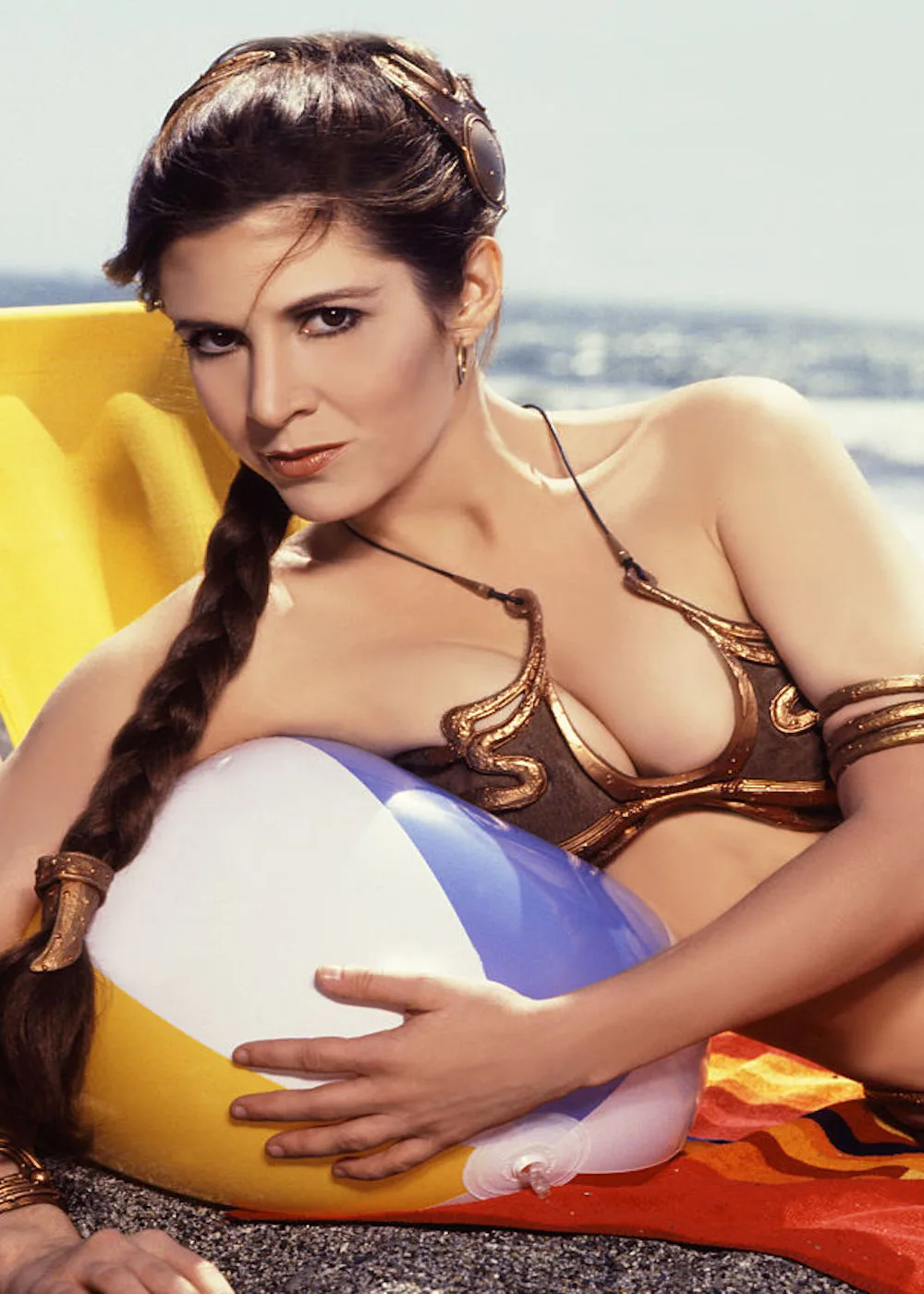
The iconic gold slave bikini
Getty Images
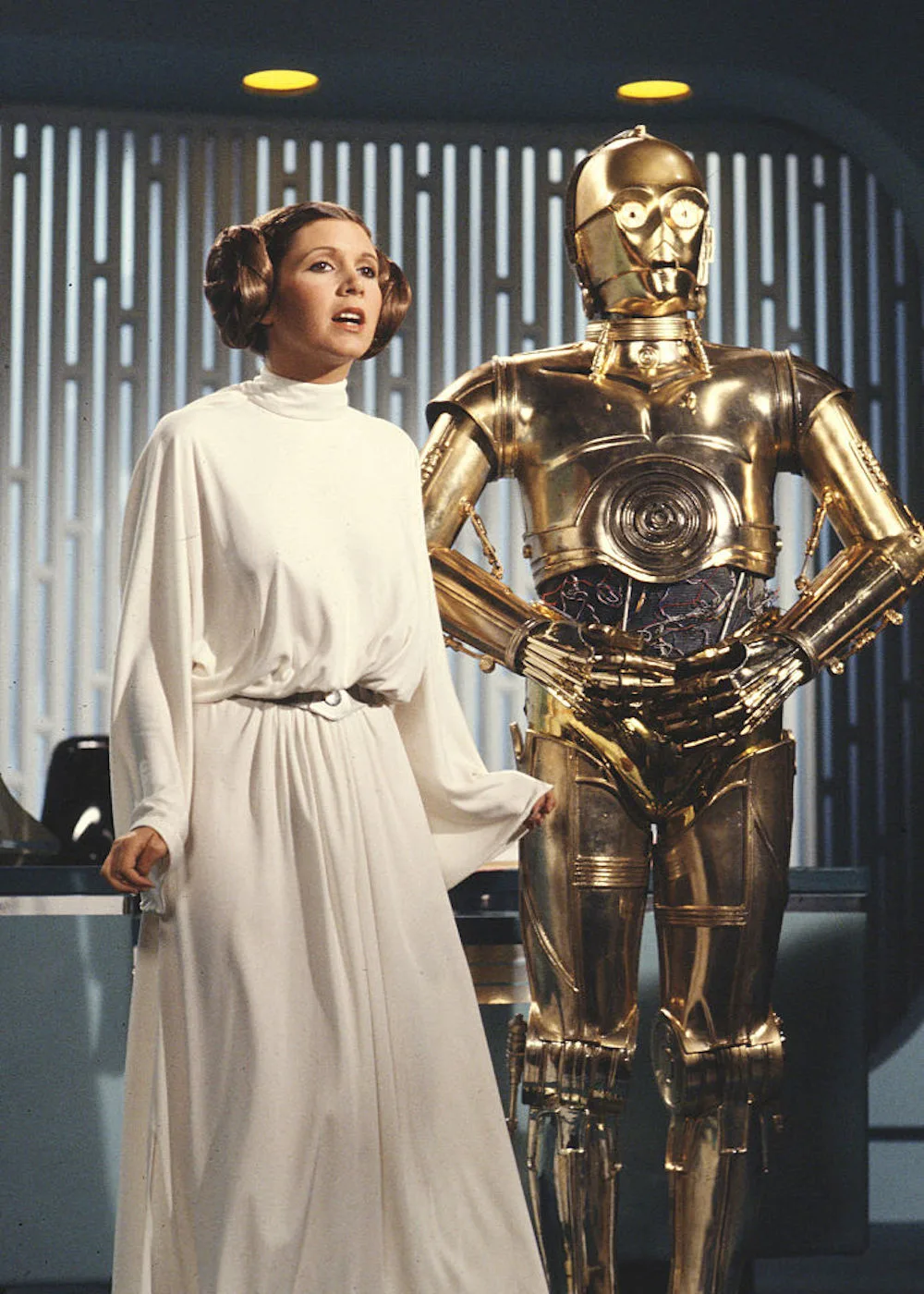
1977’s Star Wars made movie history
Getty Images

shoot on the beach in the Leia gold bikini
Getty Images
“I’ve learnt to celebrate my life. If I have the problems, the problems don’t have me”
While in rehab, a surprising new career direction presented itself. Having read an interview with Carrie, a publishing house sent her a letter asking if she would be interested in writing a book. The result was the acclaimed bestseller Postcards From The Edge, a nominally fictional story of a drug-addicted daughter and her mother. Three years later, the film adaptation hit the big screen, starring Meryl Streep and Shirley MacLaine. Two more semi-autobiographical novels, Surrender The Pink (based on her relationship with Paul) and Delusions Of Grandma would follow.
And soon Hollywood came calling again, but this time Carrie was in demand as a top “script doctor”, drafted in to whip screenplays for blockbuster movies such as Sister Act, Lethal Weapon 3 and Coyote Ugly into shape. She also kept the acting fame burning with appearances on both the big screen (as the famed BFF in romcom When Harry Met Sally) and later on the small screen (in stellar hits such as Sex And The City, Weeds and 30 Rock).
The advent of the 1990s saw Carrie falling for agent Bryan Lourd and giving birth to their daughter, Billie, in 1992. “Bryan took really, really good care of me, and this was the first time a man had ever done that,” she said. “He used to give me baths like I was a Labrador.”
However, their domestic bliss wasn’t to last: when Billie was only a year old, Bryan left Carrie for a man.
In the wake of their break-up her mood swings intensified, and she abandoned her bipolar medications. When she was manic, she has said, “I could be brilliant … I’d keep people on the phone for eight hours.” And when she was depressed, she couldn’t get out of bed.
By 1997 she was back on meds, but after a psychotic breakdown a more controversial form of therapy was required, and Carrie undertook electro convulsive therapy (ECT). Writing of her treatment in her 2012 book, Shockaholic, she revealed: “It was like a mute button muffing the noise of my shrieking feelings.” Until her death in December 2016, Carrie lived in a Beverly Hills home that once belonged to legendary actress Bette Davis, next door to her mother’s place. “It’s like a little commune,” she said. “Right now I have three straight guys and one gay man [staying], so that’s really a nice little harem.”
Last year, Carrie reprised Leia in the JJ Abrams reboot of George Lucas’s intergalactic opus, with Harrison Ford, Mark Hamill and a host of up and-coming actors. Daisy Ridley, who co-starred in the new-gen version, enthuses: “Everything that I adore in Carrie I also adore in Leia. She’s so funny, she’s so sweet, she’s so smart. She’s kick-ass and cool.” Her mentor’s advice? “Keep fighting against that slave outfit!” quips Carrie in a recent conversation with Daisy for Interview magazine. But it seems times have changed in a galaxy far, far away, with industry insiders claiming the infamous metal bikini will be discontinued from all future Star Wars merchandise. Approaching her 60th year, Carrie reflected, “I’ve learnt to celebrate my life, to embrace it. If I have the problems, the problems don’t have me.”
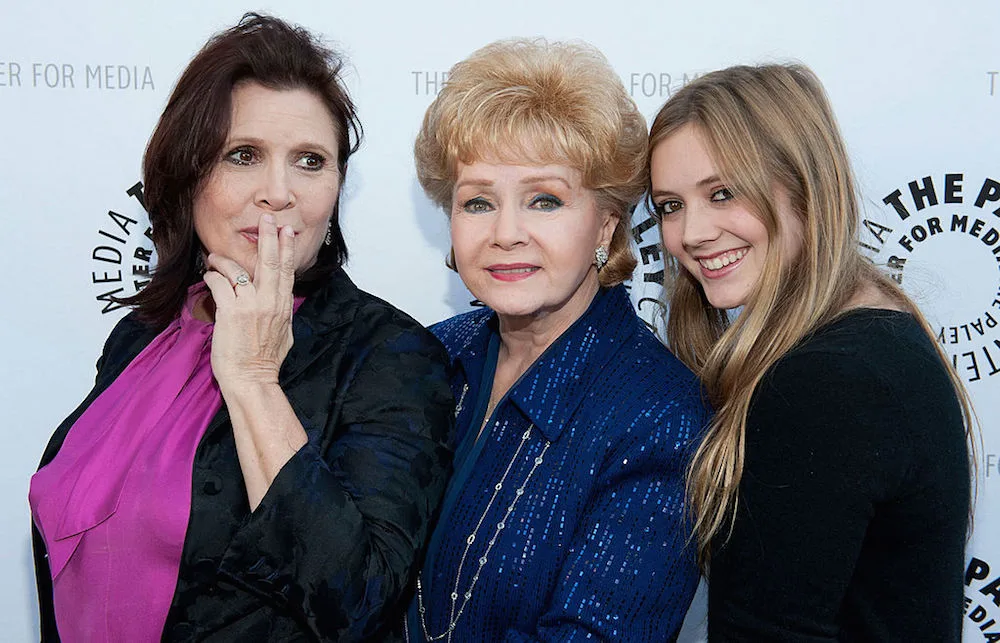
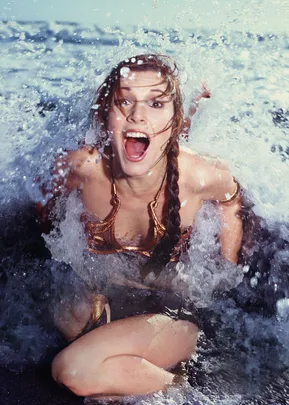 Getty Images
Getty Images


